This Vegan Bibimbap is full of a variety of colors, flavors, and textures. You get spiciness from the Korean Tofu, umami from the mushrooms, sweet and sour from the pickled radish, and more! Serve over sticky rice for an amazing explosion of Korean flavors!
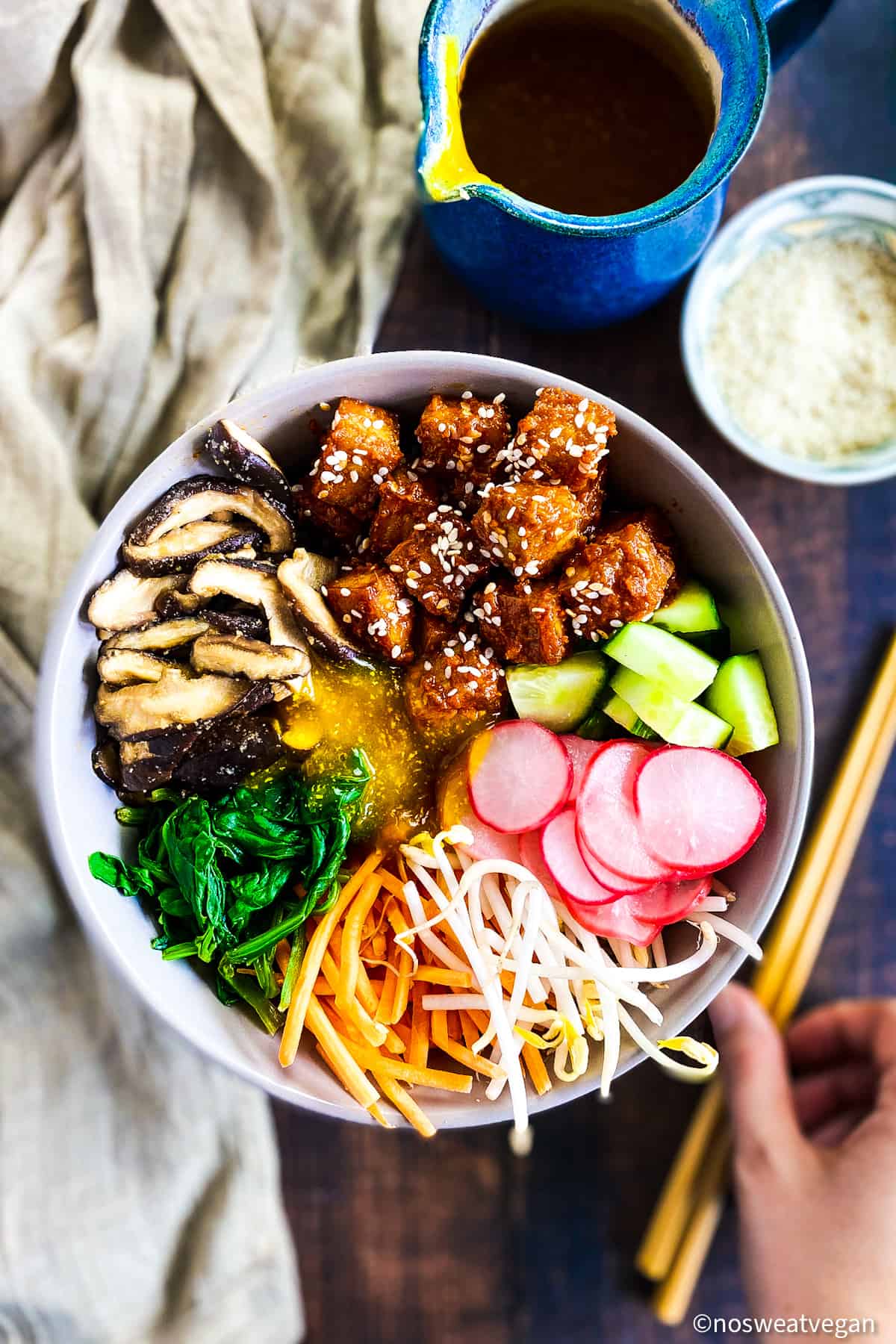
Bibimbap is a Korean dish that combines rice and a variety of vegetable and protein elements for an explosion of flavor. The word Bibimbap itself means mixed rice, but this dish is so much more!
The beauty of the Bibimbap is the combination of tastes and textures that puts this dish in a class by itself. I've veganized it by using tofu as the main protein and a vegan egg yolk sauce in place of the traditional egg.
If you've never had Bibimbap or if you miss ordering it at restaurants, you have to give this Vegan Bibimbap a try. It's oh-so-comforting and out of this world delicious!
Jump to:
You'll love this Vegan Bibimbap Recipe because it's:
- Full of Amazing Korean Flavors!
- Vegan / Vegetarian
- Egg-free / Dairy-free
- Easy to make Gluten-Free
- WFPB & Oil-Free
- Nurishing and Delicious!
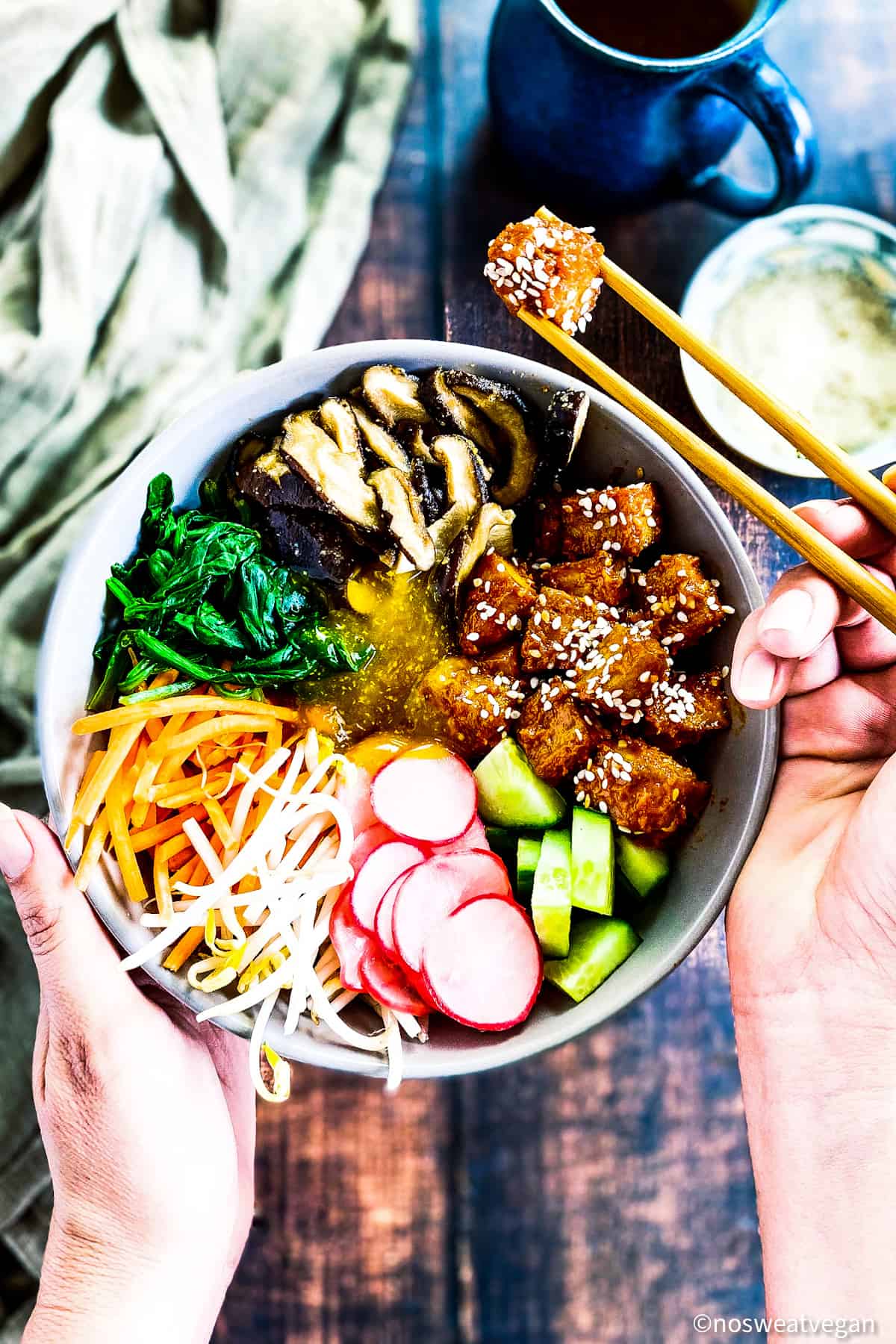
What makes a good Bibimbap?
The components of bibimbap will be a little different everywhere. For this recipe, I tried to use a mix of ingredients that stay true to the Bibimbaps I've had at Korean restaurants while also being readily available to my readers outside of Asia.
Ideally, the components should have a range of flavors including sweet, sour, and umami, and different textures including soft and crunchy. Usually, Bibimbap is topped with a gochujang sauce. I've left that out of this dish since the tofu already has one. You can make and add more sauce if you want, but to me, it seemed like enough.
Why include the egg sauce?
If you've ever had Bibimbap at a Korean restaurant it was probably served in a piping hot stone bowl or pot. This is called Dolsot Bibimbap and the hot stone bowl makes the rice crunchy and delicious.
The dish is often served with a raw egg cracked on top, which cooks itself when you mix all the ingredients together. The raw egg was what inspired me to add a vegan egg yolk sauce to this recipe.
Is Bibimbap served with kimchi?
Sometimes Bibimbap is served with kimchi, but that didn't seem necessary here since the Korean tofu has a lot of the same flavor as Kimchi and I thought adding more on would be overkill. Plus, Kimchi is not traditionally vegan, so I didn't want to make the dish more difficult. If you have a great brand of vegan kimchi that you love, feel free to add it to the bowl or enjoy it on the side.
Can this be gluten-free?
Yes! To make this gluten-free just be sure to use gluten-free soy sauce or tamarind sauce.
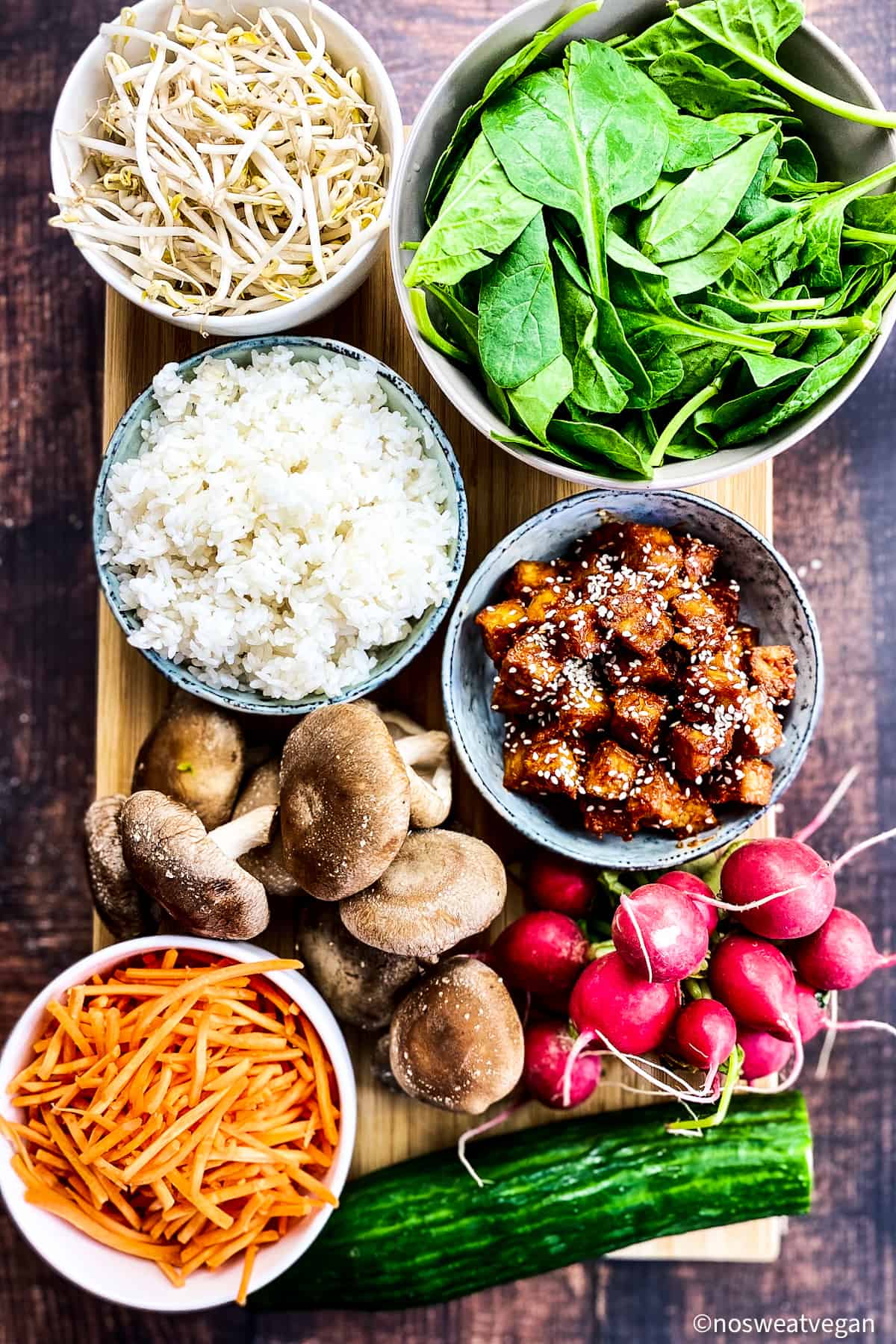
Ingredients
- Korean tofu: I've linked to my Korean Gochujang Tofu recipe, but if you wanted to keep this soy free you could use Vegan Kimchi instead.
- short grain rice (white or brown): It's important to use short-grain rice for this dish as it's stickier and helps the dish come together better than long grain varieties like basmati or jasmine.
- shredded carrots
- mung bean sprouts
- cucumber
Quick Pickled Radishes
You can use pre-pickled radishes if you have them. Or you can use another pickled vegetable component. This spicy pickled cabbage would also work.
- sliced radishes
- rice wine vinegar
- agave or maple syrup
- water
- sea salt
Sautéd Spinach
Any type of sautéd greens can be substituted, including kale, chard, or whatever you have on hand.
- baby spinach
- water
- soy sauce
Sautéd Mushrooms
I used shiitake mushrooms, but just about any type of mushroom should work here.
- sliced shiitake mushrooms
- soy sauce
- granulated garlic
Vegan Egg Yolk Sauce
Bibimbap is usually served with a fried or raw egg on top, so this sauce is the perfect replacement. I modified the recipe from this Vegan Toast Dipping Sauce by It Doesn't Taste Like Chicken.
- water
- nutritional yeast
- cornstarch or arrowroot powder
- kala namak: This is a special black salt that has a sulfuric flavor that gives this sauce an eggy taste.
- turmeric
Variations
- Bibimbap is a mixture of a variety of ingredients. Above you'll see the components I chose. However there are endless possibilites. Just be sure to try to balance the various elements of the bowl. You want a combination of soft and crunchy vegetables, sweet and sour, spicy and umami flavors.
- For something similar but with a sweeter profile, check out these Tofu Poke Bowls!
Instructions
- Bibimbap has many components. Each one is fairly simple, but when you add them all together it can get overwhelming. Before you get started, take 10 to 15 minutes to assemble all of your ingredients. Wash and prep all of your vegetables. This includes chopping cucumbers, slicing radishes and mushrooms, and shredding carrots (if needed).
- Start by preparing the Korean Tofu following the linked instructions.
- If you do not have precooked or quick cooking rice, you should also prepare that.
- While the tofu is baking and the rice is cooking, prepare the rest of the bibimbap components.
- Make the quick pickled radishes: Place the sliced radishes in a shallow bowl and set aside. Add 2 tbsp rice wine vinegar, 2 tbsp agave or maple syrup, 1 tbsp water, and ¼ tsp sea salt to a small saucepot. Bring to a boil, and then pour over the radish slices, making sure the radishes are all covered. Set aside.
- Make the Spinach: Add 5oz of baby spinach, 1 tablespoon of water and 1 tablespoon soy sauce to a skillet and cook over medium heat until the spinach is wilted and reduced in size (about 3 minutes). Place the spinach in a bowl and set aside.
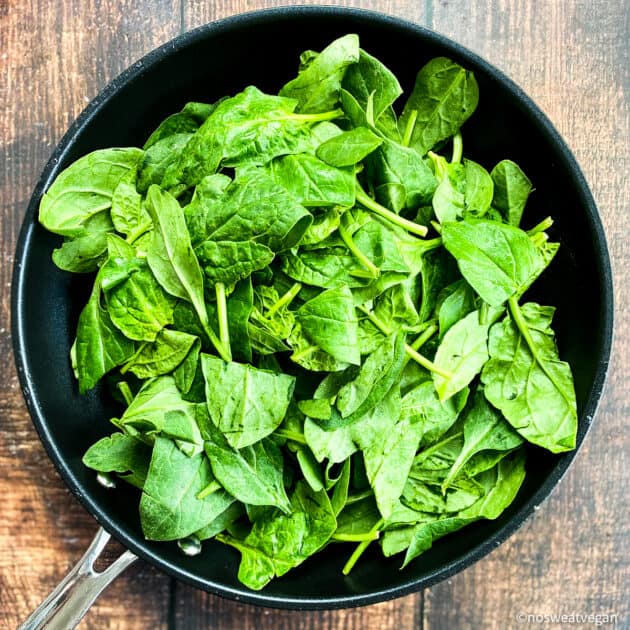
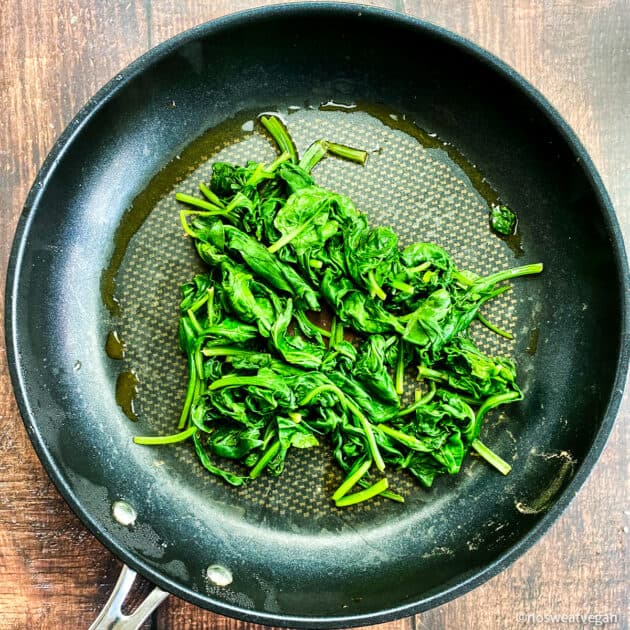
- Make the Shiitake Mushrooms: In the same skillet add your sliced shiitake mushrooms along with 1 tablespoon soy sauce and 1 tablespoon granulated garlic. Sauté over medium heat until the mushrooms are cooked through but still firm (about 5 minutes). Place in a bowl and set aside.
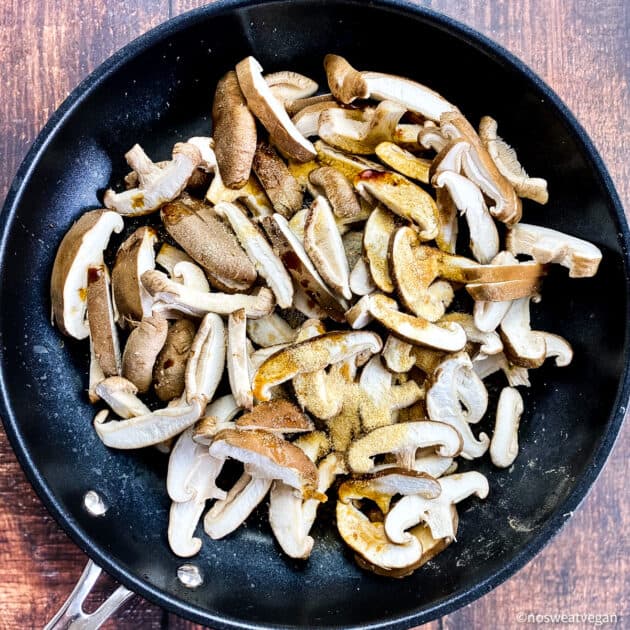
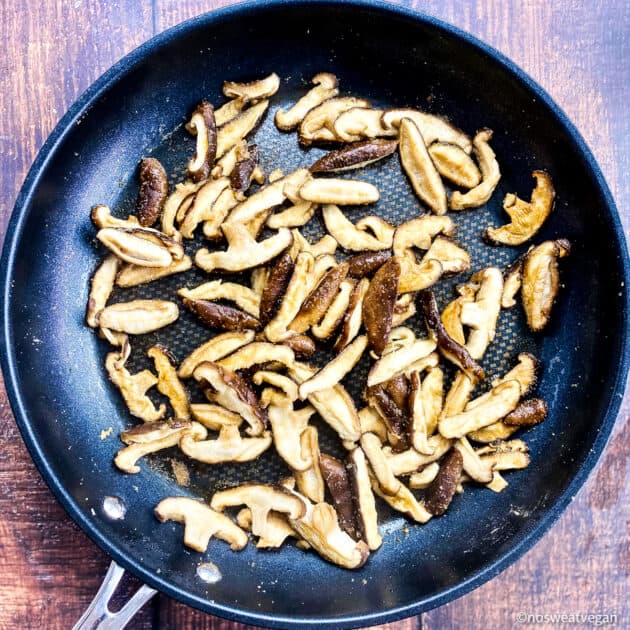
- Make the Vegan Egg Yolk Sauce: Add all of the egg yolk ingredients to a small saucepot and cook over medium heat, stirring until the sauce thickens to the cinsistency of an egg yolk (2 to 4 minutes). Place in a small jug or gravy boat and set aside.
- Now you have made all of the Bibimbap ingredients and it's time to assemble! For each person add rice to the bottom of a large bowl. Divide each of the bibimbap vegetable and tofu components among the 4 bowls. Finally, pour a few tablespoons of the vegan egg yolk sauce to the center of each bowl. Serve right away and enjoy!
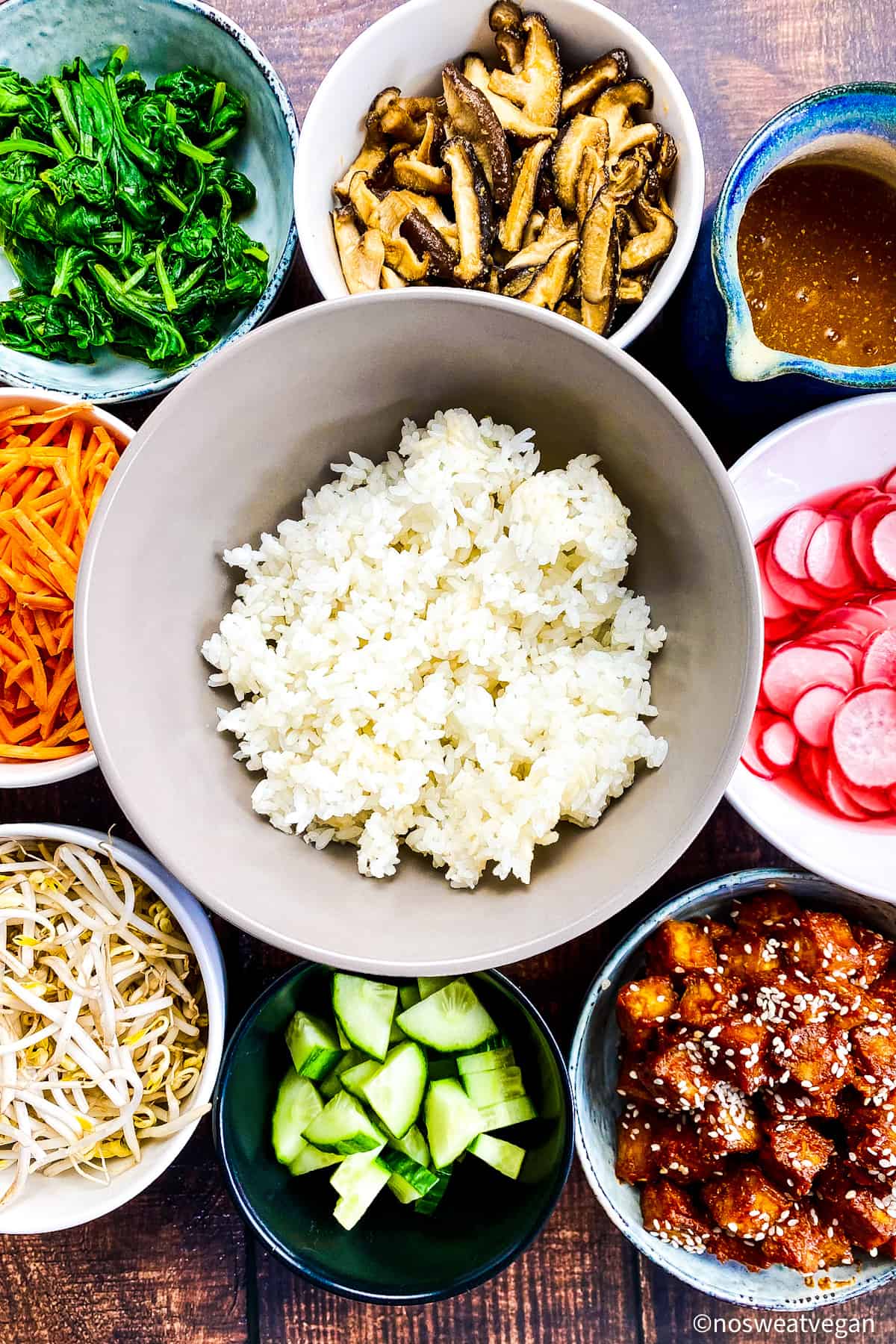
How to serve
Serve Bibimbap in a bowl over sticky short-grain rice. Half the fun is adding the components in neat groups like the photos above and then mixing everything together. It doesn't look quite as pretty after it's all mixed together but you can see in the photo below that it still looks delicious!
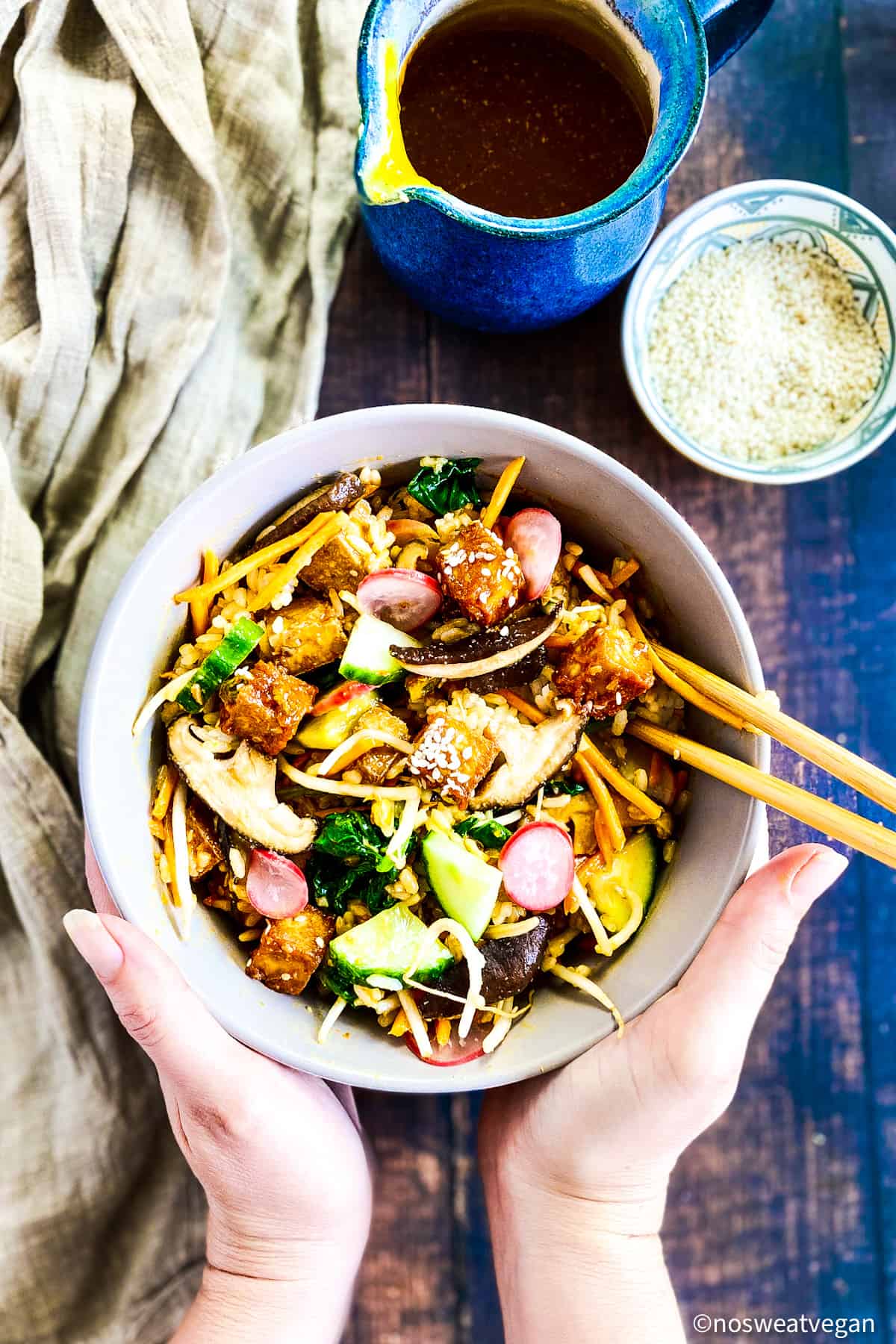
Can I make it ahead?
You can prepare the separate components ahead of time, but wait until you are ready to serve to assemble the bibimbap bowls.
How to store
- Store leftovers in an airtight container in the refrigerator for up to a week.
- Do not freeze leftovers.
Related recipes
📖 Recipe
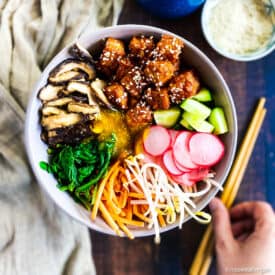
Vegan Bibimbap
Equipment
Ingredients
- 14 oz Korean tofu
- 2 cups cooked short grain rice (white or brown)
- 1 cup shredded carrots
- 1 cup mung bean sprouts
- 1 cup chopped and quartered cucumber
Quick Pickled Radishes
- 8 to 10 radishes (cleaned and sliced thin)
- 2 tablespoon rice wine vinegar
- 2 tablespoon agave or maple syrup
- 1 tablespoon water
- ¼ teaspoon sea salt
Sauted Spinach
- 5 oz baby spinach (washed)
- 1 tablespoon water
- 1 tablespoon soy sauce
Sauted Mushrooms
- 8 oz shitake mushrooms (cleaned and sliced)
- 1 tablespoon soy sauce
- 1 teaspoon granulated garlic
Vegan Egg Yolk Sauce
- 1 cup water
- 2 tablespoon nutritional yeast
- 1 ½ tablespoon cornstarch or arrowroot powder
- 1 tablespoon kala namak
- ¼ teaspoon tumeric
Instructions
- First, assemble all of your ingredients. Wash and prep all of your vegetables. This includes chopping cucumbers, slicing radishes and mushrooms, and shredding carrots (if needed).
- Prepare the Korean Tofu following (linked here). You should also prepare your rice according to the package instructions now.
- While the tofu and rice are cooking, prepare the other components.
Make the Quick-Pickled Radishes
- Place the sliced radishes in a shallow bowl and set aside. Add 2 tbsp rice wine vinegar, 2 tbsp agave or maple syrup, 1 tbsp water, and ¼ tsp sea salt to a small saucepot. Bring to a boil, and then pour over the radish slices, making sure the radishes are all covered. Set aside.
Make the Spinach
- Add 5oz of baby spinach, 1 tablespoon of water, and 1 tablespoon soy sauce to a skillet and cook over medium heat until the spinach is wilted and reduced in size (about 3 minutes). Place the spinach in a bowl and set aside.
Make the Mushrooms
- In the same skillet add your sliced shiitake mushrooms along with 1 tablespoon soy sauce and 1 tablespoon granulated garlic to the same skillet. Cook over medium heat until mushrooms are cooked through but still firm (about 5 minutes). Place in a bowl and set aside.
Make the Egg Yolk Sauce
- Add all of the vegan egg yolk ingredients to a small saucepot and cook over medium heat, stirring until the sauce thickens to the consistency of an egg yolk (2 to 4 minutes). Place in a small jug or gravy boat and set aside.
Assemble the Bibimbap bowls
- To each bowl add ½ cup of rice. Divide each of the bibimbap vegetable and tofu components among the 4 bowls. Finally, pour a few tablespoons of the vegan egg yolk sauce to the center of each bowl. Serve right away and enjoy!
Notes
- The vegan egg yolk sauce was adapted from "Vegan Toast Dipping Sauce" by It Doesn't Taste Like Chicken.
Want access to my Exclusive Meal Planning Tips & Printables page?
Did you try this recipe? Have a question? Just leave a comment below and I'll get back to you ASAP!


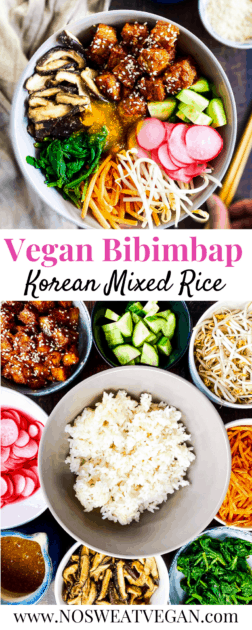
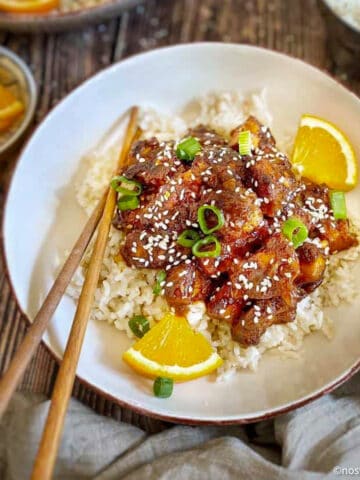
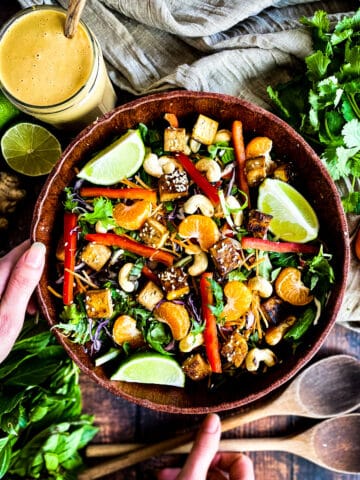
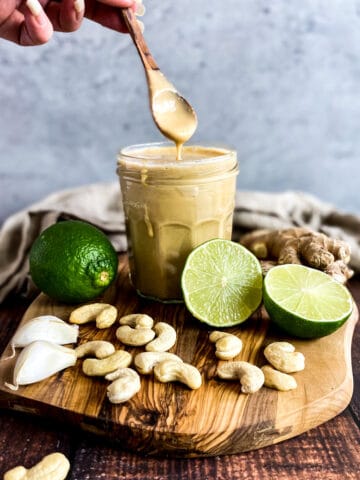
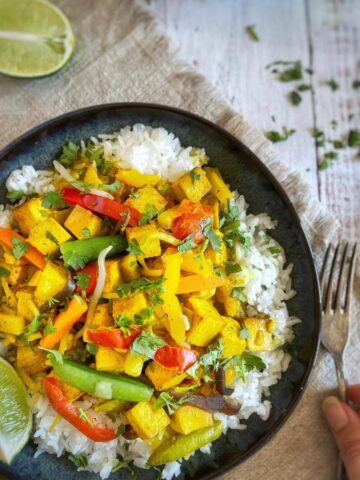




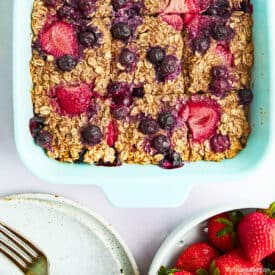
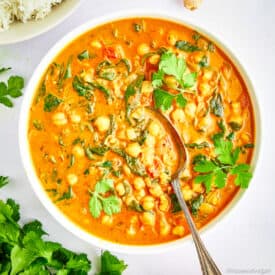

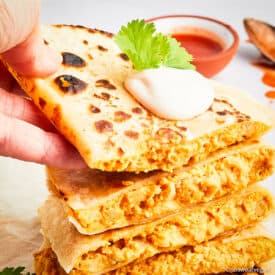
Leave a Reply